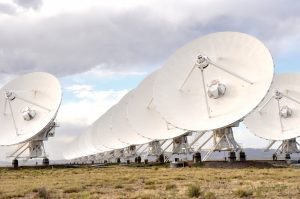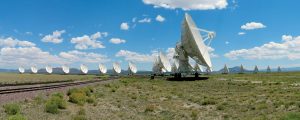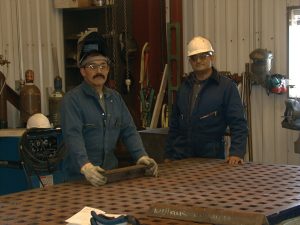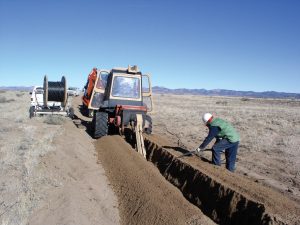There are 27 dish antennas within the Very Large Array that are identical 25-meter telescopes working together as one. This photo shows the array in its most compact configuration, but during other times of the year, the antennas will move farther apart. The movement of these telescopes is similar to the zoom function on a camera, as the telescopes more farther away from each other they capture a larger picture of a portion of the universe.


Outstanding in Wide Field
The Very Large Array in New Mexico is the world’s most powerful and versatile radio telescope. Its 27 antennas work together as one giant telescope nearly a mile across to 22 miles wide. They all first observed the skies together as the VLA in 1979.

The WIDAR Supercomputer
This is the supercomputer for the Very Large Array (VLA) in central New Mexico. Housed in its own Faraday cage-equipped room, this incredible instrument can perform 16 quadrillion operations every second. This computer was designed and built by our partners at the National Research Council in Canada. They came up with a new method of combining data, called Wideband Interferometric Digital ARchitecture, or WIDAR for short.

Welders at the VLA
Millions of tons of steel make up the 28 antennas of the Very Large Array. It takes a dedicated crew of skilled welders to keep the antennas in safe, working order and to construct new metal installations when needed around the busy New Mexico observatory site.

Fiber Trenches at the VLA
Part of the major multi-year upgrade to the Very Large Array was to replace its original metal piped wave guide with fiber optics. Digging the deep trenches for the 2760 miles of fiber was a difficult but necessary task that ensured the connection between antennas and other equipment functioned properly.

VLA Transporter Technicians
These technicians operate and maintain the two Antenna Transporters and lead the critical safe moves of the antennas of the Very Large Array in New Mexico.





